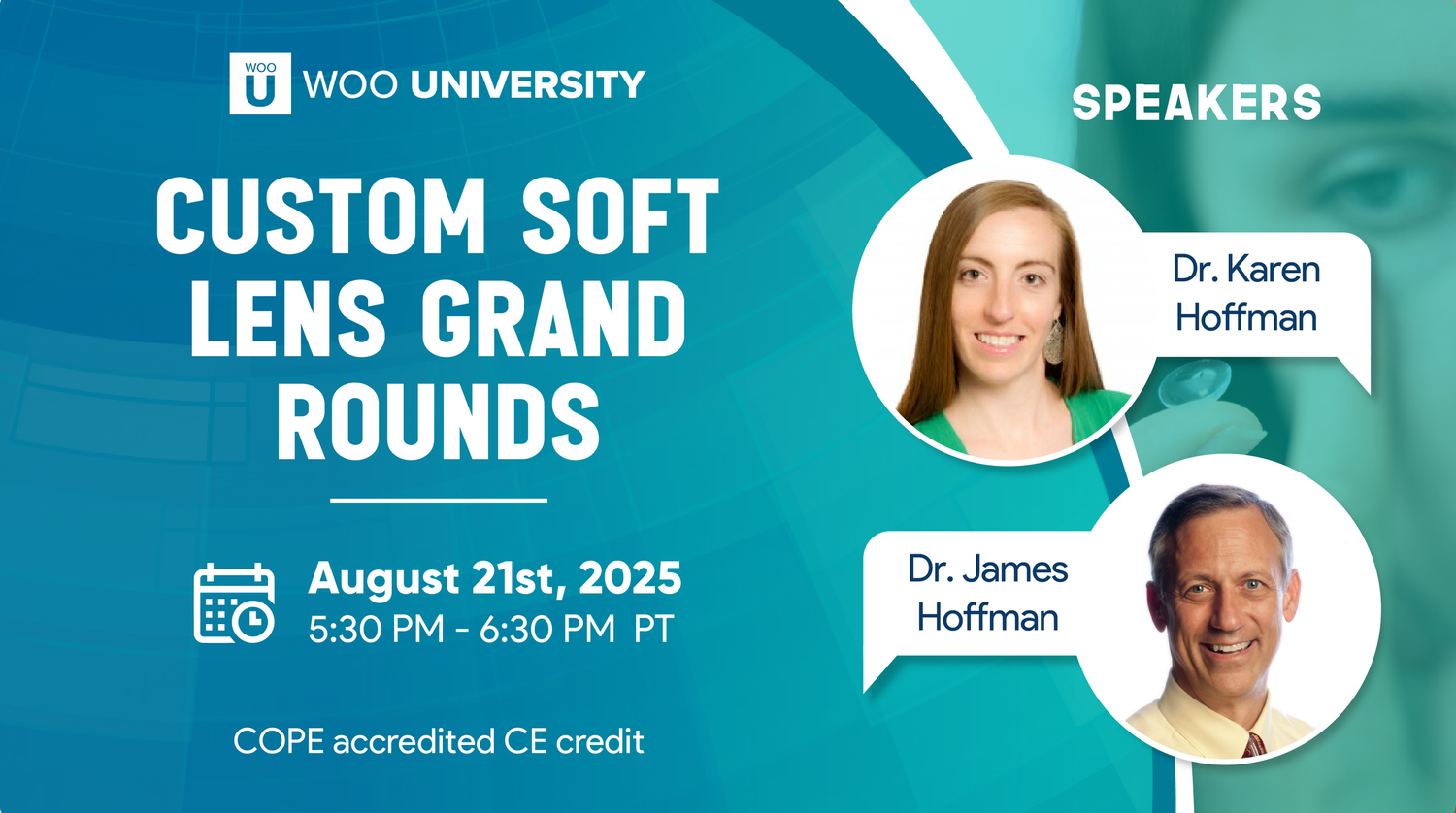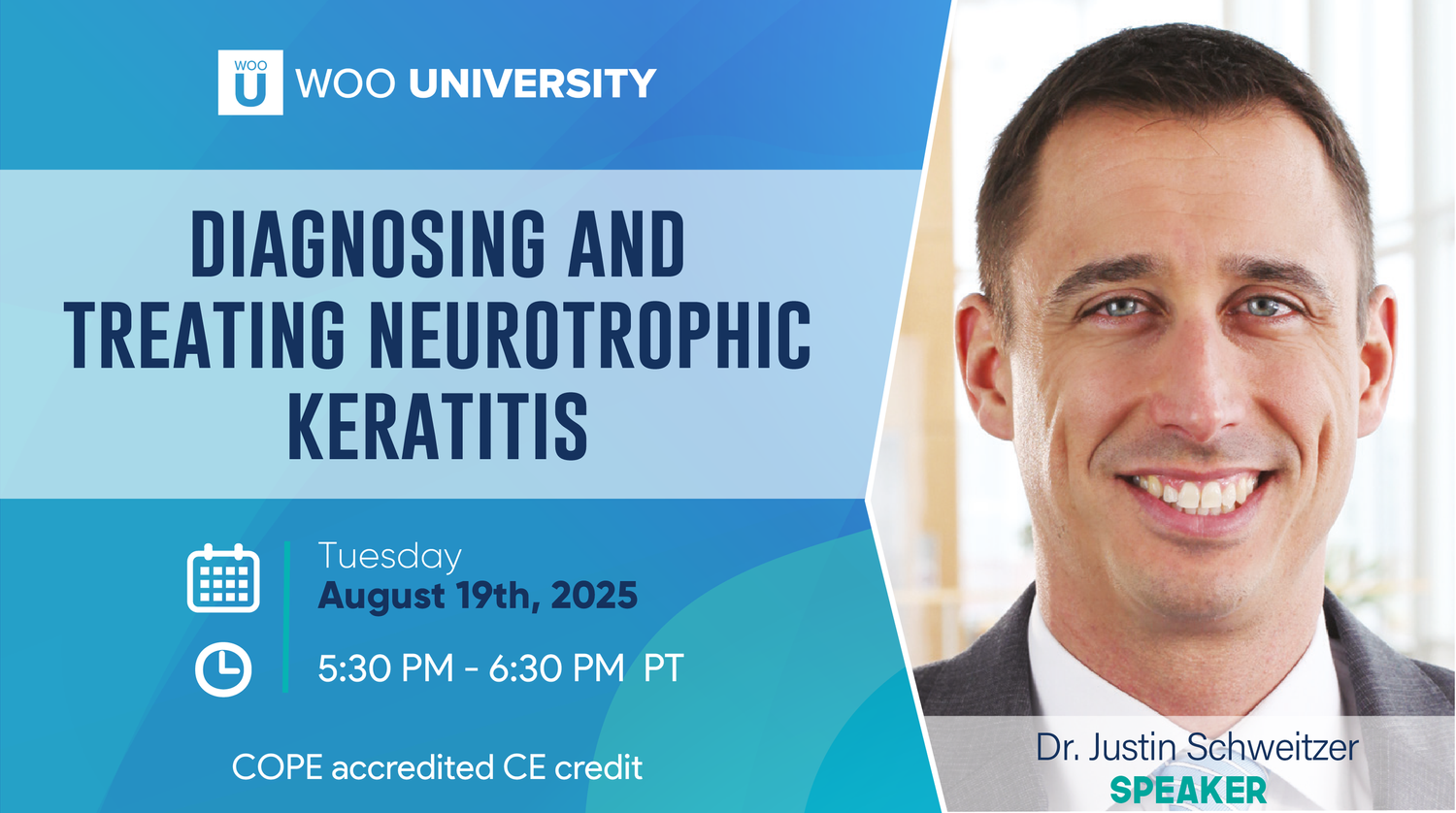CE Recap: Custom Soft Lens Grand Rounds and Neurotrophic Keratitis – Clinical Grand Rounds
In this course, we reviewed how to select good patient candidates for custom soft lenses. We learned from live patient cases with an exciting presentation of grand rounds.
Custom Soft Lens Grand Rounds
This lecture, presented by Drs. Karen & James Hoffman, shares the story of how custom soft lenses can succeed where standard options fall short. It begins with the common challenge: patients whose prescriptions, corneal shapes, or visual needs can’t be met by off-the-shelf designs. From high powers and astigmatism to irregular corneas and unique lifestyle demands, these situations call for creativity and precision.
Through a series of clinical cases, the presentation shows how custom optics transform outcomes. Patients with keratoconus, hyperopia with astigmatism, and corneal ectasia highlight the importance of accurate optical alignment, near-zone customization, and compensating for lens rotation. Cases with Terrien’s degeneration or progressive myopia demonstrate how vaulting designs and precise toric control can restore stable, functional vision. Even challenges like color deficiency or multifocal adaptation are addressed, underscoring that custom lenses are not only possible, but often the simplest solution when thoughtfully designed.
By the end, the take-home message is clear: custom doesn’t have to mean complicated—these lenses bridge the gap between patient expectations and visual reality.
Key Takeaways:
Custom soft lenses are ideal for high powers, irregular corneas, and complex prescriptions.
Decentration control, optic zone design, and add power customization are crucial.
Vaulting designs and rotational stability expand success in irregular corneas.
Creative solutions (e.g., tints, zone modifications) can meet unique lifestyle or occupational needs.
Custom lenses transform “difficult” fits into long-term visual success.
This course covered patient populations at high risk for neurotrophic keratitis, recommended testing procedures to aid in diagnosis, and helped formulate treatment plans to improve outcomes.
Diagnosing and Treating Neurotrophic Keratitis
This amazing lecture by Dr. Justin Schweitzer reviews the pathophysiology, staging, and management of neurotrophic keratitis (NK), a condition that can progress silently but lead to significant vision loss if left untreated. Early recognition through careful history and corneal sensitivity testing is emphasized, as even Stage 1 disease requires timely intervention.
Treatment approaches are outlined across the spectrum of severity, from artificial tears, punctal occlusion, and amniotic membranes, to advanced therapies such as serum tears, scleral lenses, and FDA-approved cenegermin. Emerging options like topical insulin are also discussed. Clinical examples highlight how different strategies are combined to promote epithelial healing and protect against recurrence.
Key Takeaways:
NK can present without pain—sensitivity testing is critical for diagnosis.
Stage 1 disease warrants aggressive management to prevent progression.
Treatment options include supportive measures, biologics, and surgical adjuncts.
Cenegermin offers high healing rates and represents a major advancement in care.
Management of underlying conditions (e.g., diabetes, dry eye) is essential to long-term success.
Check out the full presentation at WooU.org under “Past Events”!


